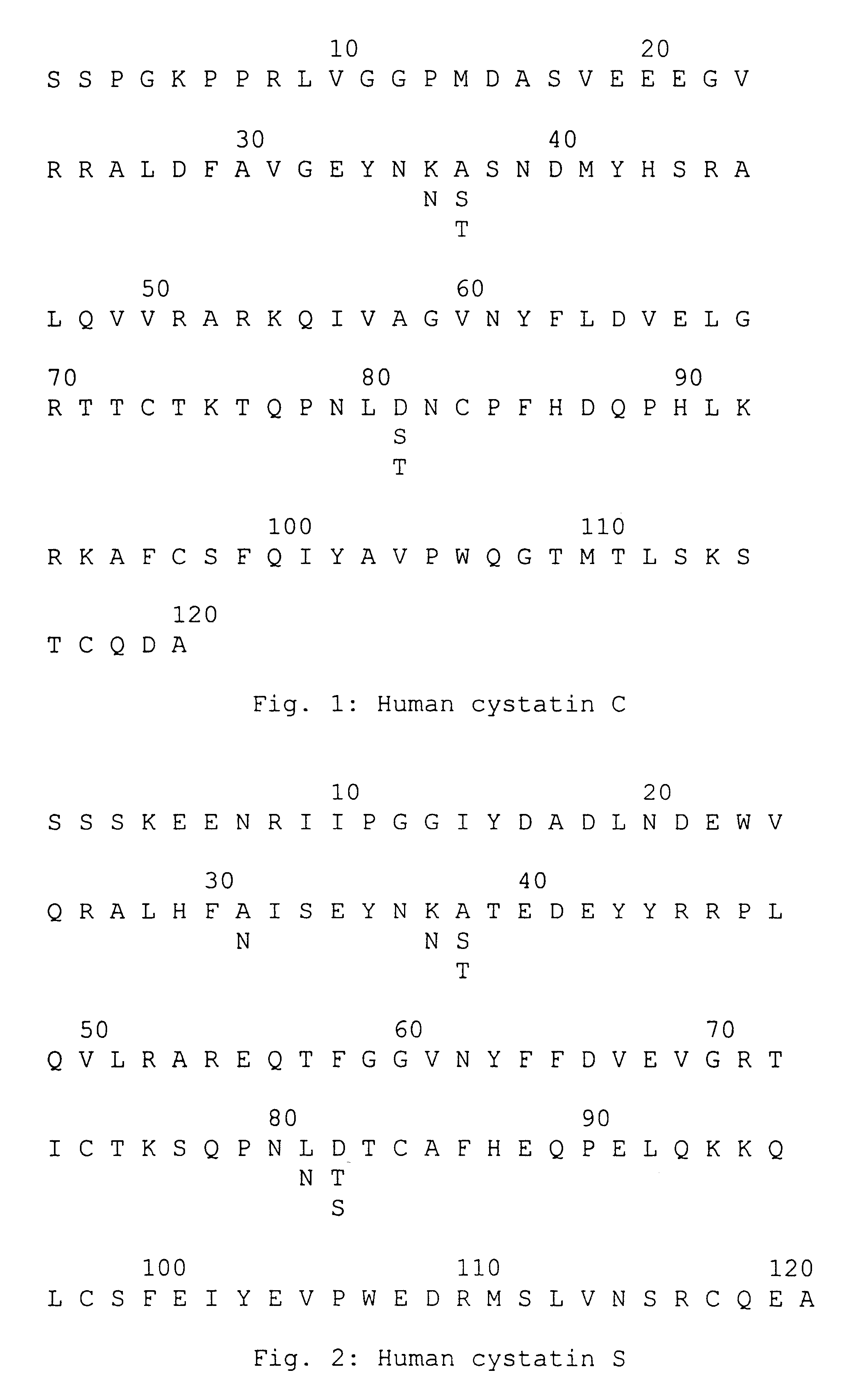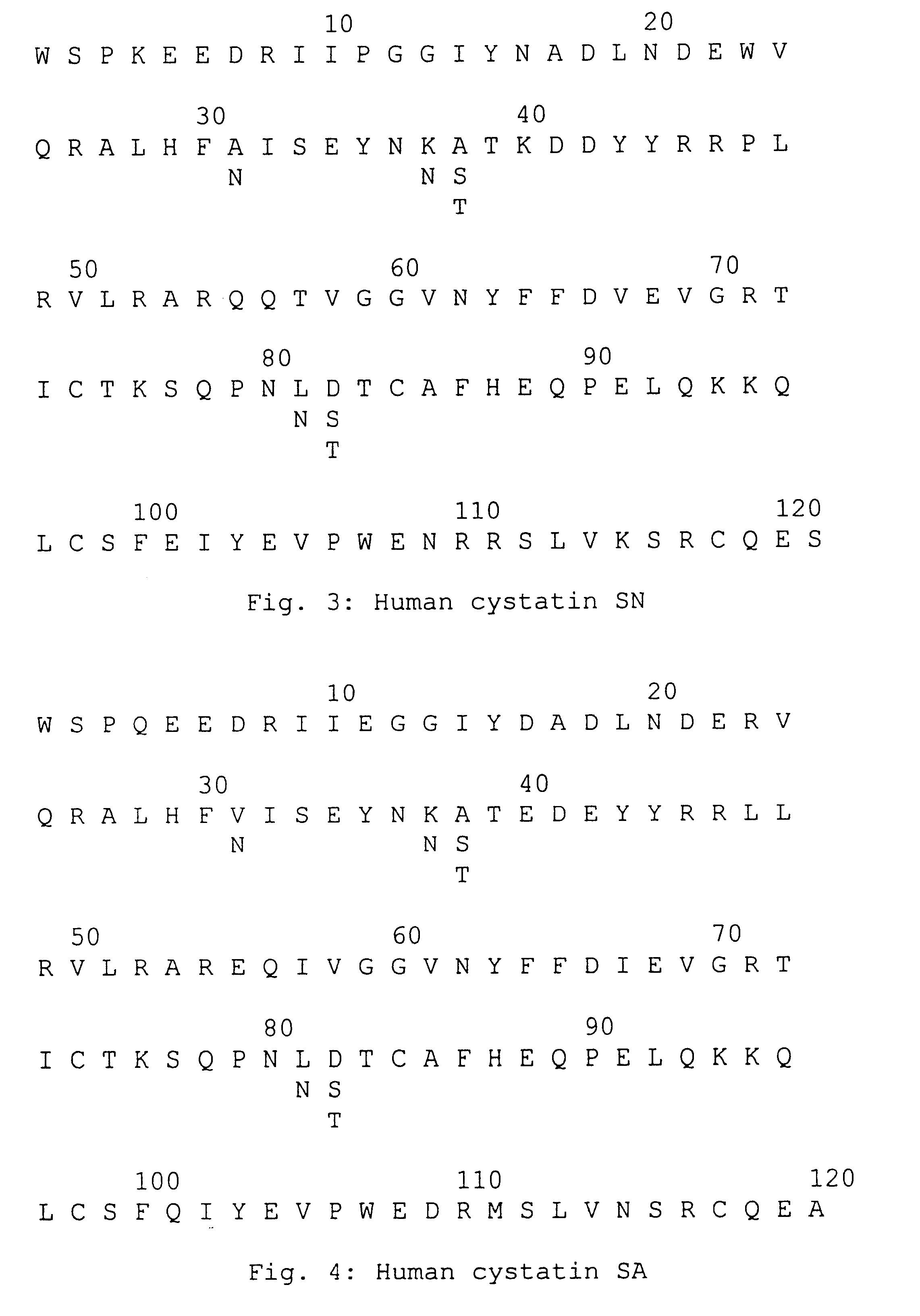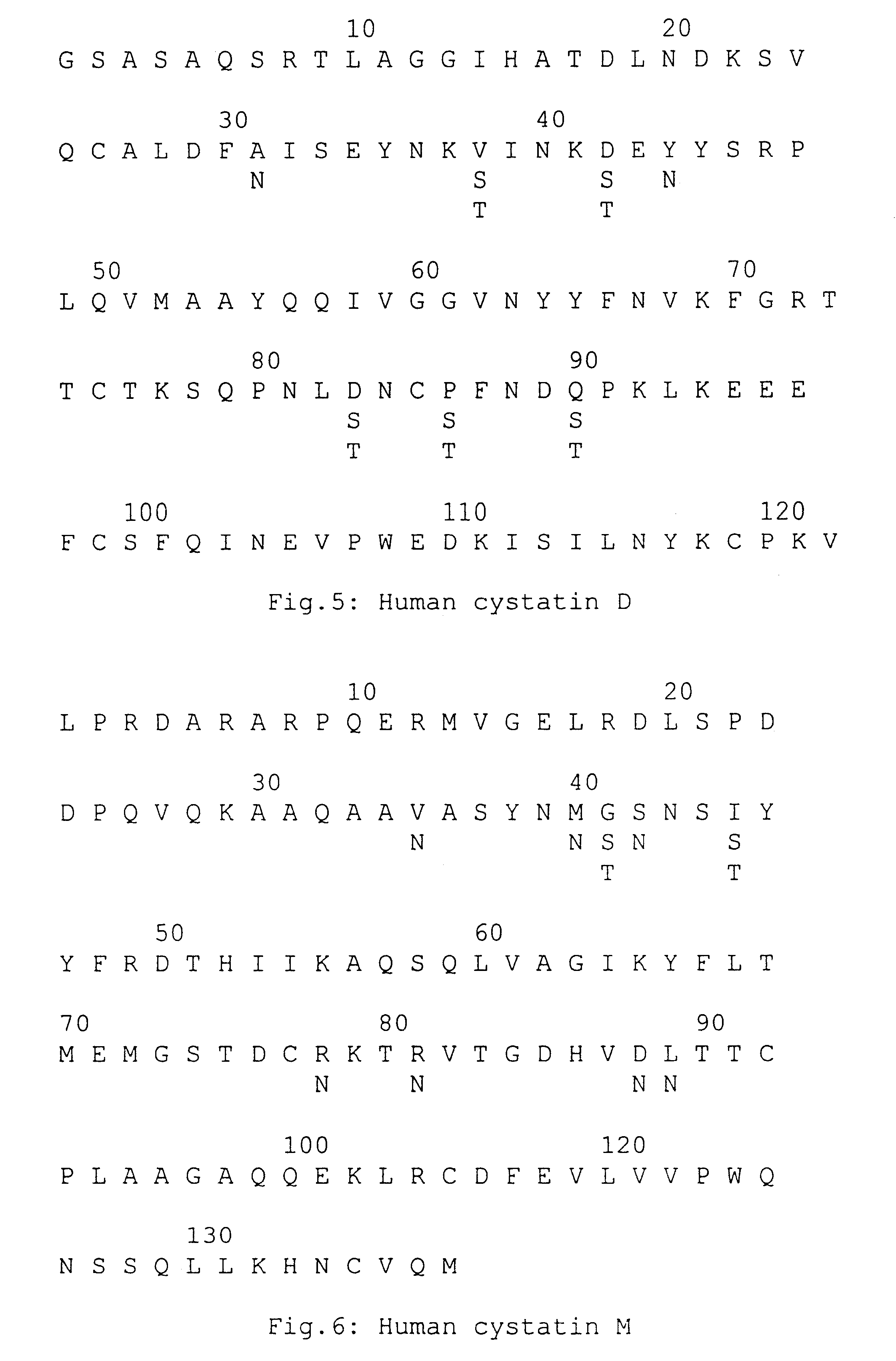Production and use of modified cystatins
a technology of modified cystatins and cystatins, which is applied in the field of production and use of modified cystatins, can solve the problems of destroying the texture of food, degrading myosin, and huge annual expenditure on preventative measures, and achieves the effects of inhibiting proteolysis, treating pathology, and inhibiting proteolysis
- Summary
- Abstract
- Description
- Claims
- Application Information
AI Technical Summary
Problems solved by technology
Method used
Image
Examples
example 1
Synthesis of Nucleotide Sequences that Code for Modified Human Cystatin C
Cloning was done using the pUC19 cloning vector and E. coli using standard gene cloning techniques (26). The yeast strain Pichia pastons KM71 was used to express mammalian genes and constructs. T4 DNA ligase, restriction enzymes, the 7-DEAZA sequencing kit and blunting kit were all purchased from TAKARA SHUZO.TM. of Kyoto, Japan. The oligonucleotide in vitro mutagenesis system (version 2) was purchased from AMERSHAM.TM. International. CM TOYOPEARL.TM. 650M resin was purchased from TOSOH.TM. of Tokyo. Concanavalin A-sepharose and a-methylmannoside were purchased from PHARMACIA.TM. and from WAKO.TM. of Tokyo, respectively. Sephadex-G50 was purchased from PHARMACIA.TM.. M13mp19 was used as a vector for CDNA construction.
The modified nucleotide sequences were made in two steps.
First, a synthetic double-stranded DNA was constructed that codes for human cystatin C, modified to have a glycosylation site at residue num...
example 2
Transformation and Clone Selection for Production of Modified Human Cystatin C
The yeast expression plasmids pYG-100 (20) and pPICZ .alpha.-C containing Saccharomyces cerevissiae .alpha. factor secretion signal and alcohol oxidase (AOX1) gene promoter were used to express the proteins of the invention. P. pastoris strain KM71 was transformed using the Pichia EASYCOM.TM. transformation system (INVITROGEN.TM., CA). Zeocin-resistant transformants were selected from yeast extract peptone dextrose sorbitol medium (YPDS) agar plates containing the zeocin. PCR sequencing was used to confirm insertion of the cystatin C gene in Pichia clones.
example 3
Expression and Purification of Modified Human Cystatin C
The Pichia transformants were incubated in yeast minimal medium (YMM). The Pichia transformants were grown at 30.degree. C. for one day in 5 mL of YMM, and then subcultured at 30.degree. C. for four days in 500 mnl of fresh YMM. 100% methanol was added into the fresh YMM to a final concentration of 0.5% methanol every 24 hours to maintain induction of the cystatin gene.
Recombinant modified human cystatin C was secreted in the Pichia culture media. The extracellular proteins were collected using an ultrafiltration system with 10,000 MW cut-off (PELLICON.TM. cassette filter, MILLIPORE.TM., Bedford, Mass.). The crude proteins thus recovered were applied to a column of Q-SEPHAROSE FAST FLOW.TM. (PHARMACIA.TM., Upsala, Sweden) equilibrated with a linear gradient of 0-0.5 M NaCl in 20 mM Tris-HCI buffer (pH7.5). The fraction including the cystatin was determined by the inhibitory activity against papain as described below. The fracti...
PUM
| Property | Measurement | Unit |
|---|---|---|
| mass | aaaaa | aaaaa |
| mass | aaaaa | aaaaa |
| mass | aaaaa | aaaaa |
Abstract
Description
Claims
Application Information
 Login to View More
Login to View More - R&D
- Intellectual Property
- Life Sciences
- Materials
- Tech Scout
- Unparalleled Data Quality
- Higher Quality Content
- 60% Fewer Hallucinations
Browse by: Latest US Patents, China's latest patents, Technical Efficacy Thesaurus, Application Domain, Technology Topic, Popular Technical Reports.
© 2025 PatSnap. All rights reserved.Legal|Privacy policy|Modern Slavery Act Transparency Statement|Sitemap|About US| Contact US: help@patsnap.com



